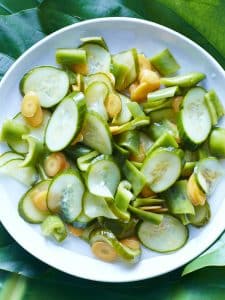What’s the Best Technique for a Flawless Moroccan Couscous?

Ah, couscous! This quintessential Moroccan dish is a versatile staple of North African cuisine. Whether it’s accompanying a hearty stew, nestled under a plethora of grilled vegetables, or folded into a vibrant salad, couscous is undeniably a crowd-pleaser. But have you ever wondered what the secret is to cooking flawless, fluffy couscous every single time? Don’t fret about the grains sticking together or turning out too mushy anymore. We’re here to reveal the best techniques and share an authentic recipe to help you ace this exotic dish.
Getting to A Good Start: Prep Work
Before you start with your Moroccan couscous, there are a few things you should know. Couscous is not a grain but rather a type of pasta, made from semolina flour and water. It’s this semolina that gives couscous its unique, slightly chewy texture and nutty flavor.
Additional reading : Discover the best app that gives you recipes based on what you have
When it’s time to cook, choose an authentic Moroccan couscous recipe. We recommend a chicken couscous recipe, but feel free to use any type of meat you have on hand. Coupled with a variety of vegetables and the right spices, you’re well on your way to creating a savory masterpiece.
One of the keys to perfect couscous is to not rush the process. Allow enough time to simmer the broth, cook the vegetables, and steam the couscous. This attention to detail will make a world of difference in your finished dish.
Also to see : Discover over 400 specialty organic and italian coffee beans
Hunting for the Perfect Ingredients
Finding the right ingredients is crucial to your couscous success. If possible, use fresh, locally sourced ingredients. Moroccan cuisine is a rich tapestry of flavors, drawing on Mediterranean, Arabian, and Berber influences.
For the vegetables, common choices are turnips, carrots, zucchinis, and cabbage. But feel free to get creative and use any of your favorites.
Spices are also a key player in any Moroccan recipe. Your spice cabinet should include cumin, coriander, cinnamon, and of course, saffron. These spices will add depth and warmth to your dish. Don’t forget to season with salt and pepper to taste.
Another essential ingredient to consider is oil. Traditionally, Moroccans use olive oil in their couscous recipes due to its rich flavor and health benefits.
The Art of Cooking the Couscous
Now let’s get down to the actual process of cooking couscous. You might think that all you have to do is add water and wait, but there’s more to it than that. For a truly authentic couscous experience, steam it.
First, rinse the couscous under cold water until the water runs clear. This removes any excess starch and prevents the grains from sticking together.
Next, add the couscous to a couscoussier, a traditional Moroccan pot designed specifically for cooking couscous. If you don’t have a couscoussier, you can use a regular steamer.
While the couscous is steaming, prepare your broth. Heat the oil in a large pot and add the chicken and vegetables. Cook until the chicken is browned and the vegetables are slightly softened. Add your spices and stir until the flavors merge together.
Infusing the Flavors
Once your broth is simmering and your couscous is steaming, it’s time to bring the two elements together.
Carefully remove the couscous from the couscoussier and place it in a large bowl. Pour a ladle of the hot broth over the couscous and stir gently with a fork to separate the grains. This process is repeated several times, allowing the couscous to absorb the flavorful broth. This technique is known as rehydration, and it’s key to achieving fluffy, flavorful couscous.
Then, return the couscous to the couscoussier for a second steaming. This allows the couscous grains to expand even more and absorb the rest of the flavors.
Serving the Moroccan Couscous
Finally, the moment you’ve been waiting for: serving the couscous.
Traditionally, couscous is served in a large communal dish. The couscous is piled high in the center, surrounded by the meat and vegetables. The remaining broth is served on the side, allowing each person to add as much or as little as they like.
Remember, Moroccan meals are social affairs. So gather your friends and family, open a bottle of Moroccan wine, and enjoy your flawless couscous. The tastes, textures, and aromatic spices will transport you straight to the bustling souks of Marrakech.
You see, the secret to a perfect Moroccan couscous lies in attention to detail: choosing the right ingredients, carefully steaming the couscous, and patiently rehydrating it with flavorful broth. With these techniques under your belt, you’re well equipped to impress your guests with an authentic Moroccan feast. Enjoy!
The Magic Ingredient: Olive Oil
A key ingredient in a Moroccan couscous recipe is olive oil. Why? It’s all about the flavor and the health benefits. Olive oil, especially the extra virgin variety, imparts a rich, earthy taste that enhances the flavor of the couscous and the other ingredients. Its health benefits are numerous, from reducing heart disease risk to aiding in weight loss and managing diabetes.
You might be wondering how much olive oil you should add. The answer depends on the quantity of couscous you’re making and your personal preference, but as a guide, you can start with two tablespoons for every cup of couscous. Adjust as necessary while you cook.
When it comes to incorporating the olive oil, it’s not just a matter of drizzling it over the couscous. You can use it in different ways to maximize the flavor. For instance, heat a little in your pot before adding your chicken and vegetables. This will help them brown beautifully and intensify their flavors. You can also mix some into your broth for added richness, or drizzle it over the cooked couscous for a final touch of Mediterranean goodness.
Remember, the quality of your olive oil matters. Try to use extra virgin olive oil, which is the purest, least-processed type. It has the most nutrients and the most robust flavor.
More than a Side Dish: Variations of Couscous
Moroccan couscous is an incredibly adaptable dish. While it’s traditionally served as a main course with a meaty stew, there are many other ways you can enjoy it. For instance, you could turn it into a refreshing couscous salad by mixing the cooked couscous with chopped fresh vegetables, lemon juice, and herbs. Add a little olive oil and some spices like ground cumin and kosher salt, and you have a light, nutritious meal.
You can also use couscous as a side dish to complement other mains. Try it with grilled fish, roasted lamb, or tangy tagines. The couscous will soak up the sauces and balance out the stronger flavors.
If you’re a vegetarian or vegan, you can still enjoy Moroccan couscous. Substitute the chicken broth with vegetable broth or even boiling water with a bit of salt. Use a variety of colorful vegetables for a wholesome, satisfying meal.
And of course, feel free to experiment with different ingredients. You can add fruits like raisins or dried apricots for a sweet-savory twist, or nuts like almonds or pistachios for an interesting crunch. The possibilities are endless!
Conclusion
And there you have it! A comprehensive guide to making flawless Moroccan couscous. This versatile dish is not just a meal, it’s an experience, a journey of flavors that takes you to the very heart of Moroccan cuisine.
From selecting the best ingredients, to mastering the art of cooking couscous, to infusing the flavors, and finally serving it with an open heart, each step is crucial and adds to the final result. Remember to be patient and to take your time. Good food, like good life, cannot be rushed.
And most importantly, enjoy the process. Pour love into your cooking, and your couscous will not just be a dish, it will be a memory, a moment of shared joy and connection. With this guide, you’re no longer just a home cook, you’re a culinary artist, ready to create your own Moroccan masterpiece. Now, let’s cook some couscous!
